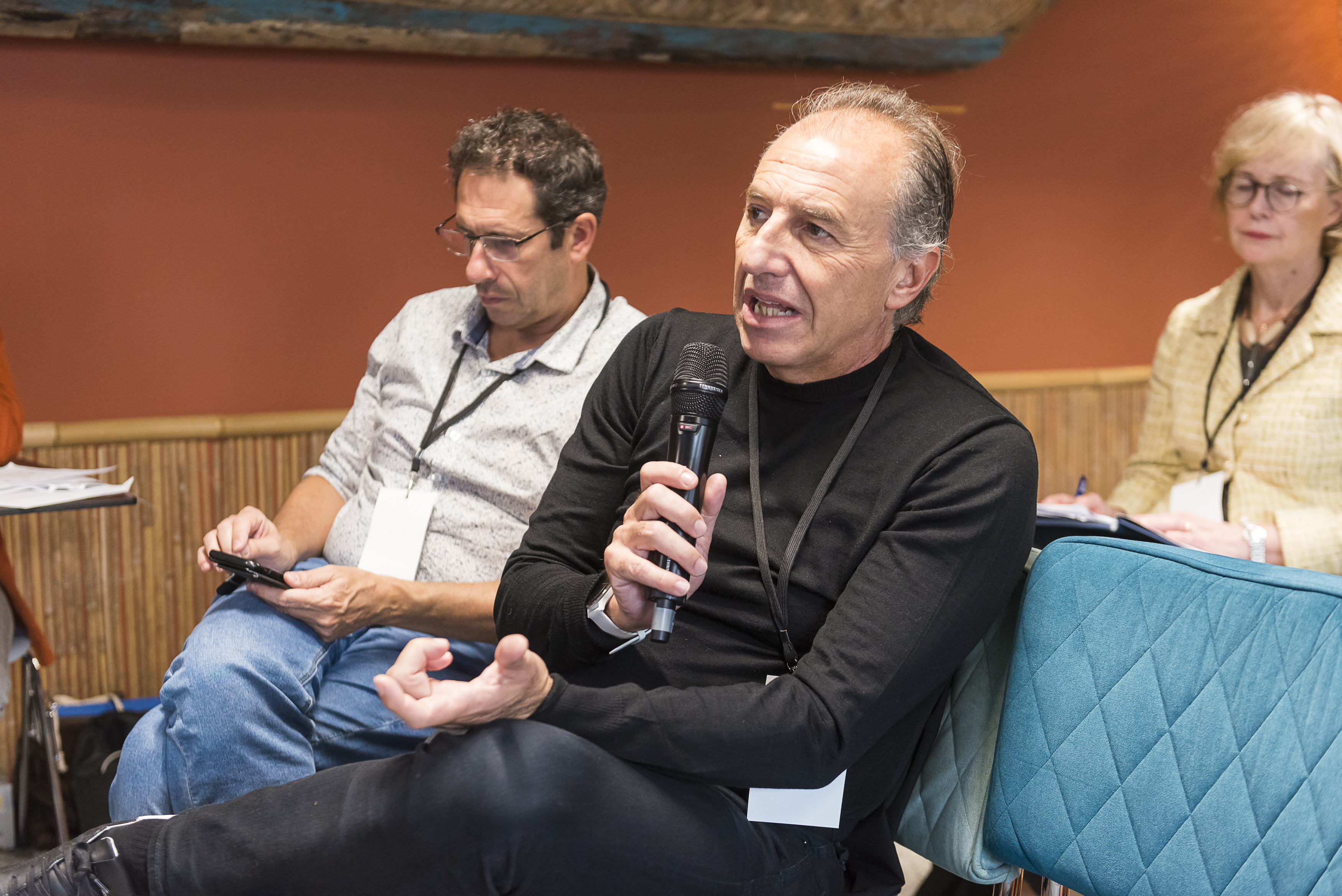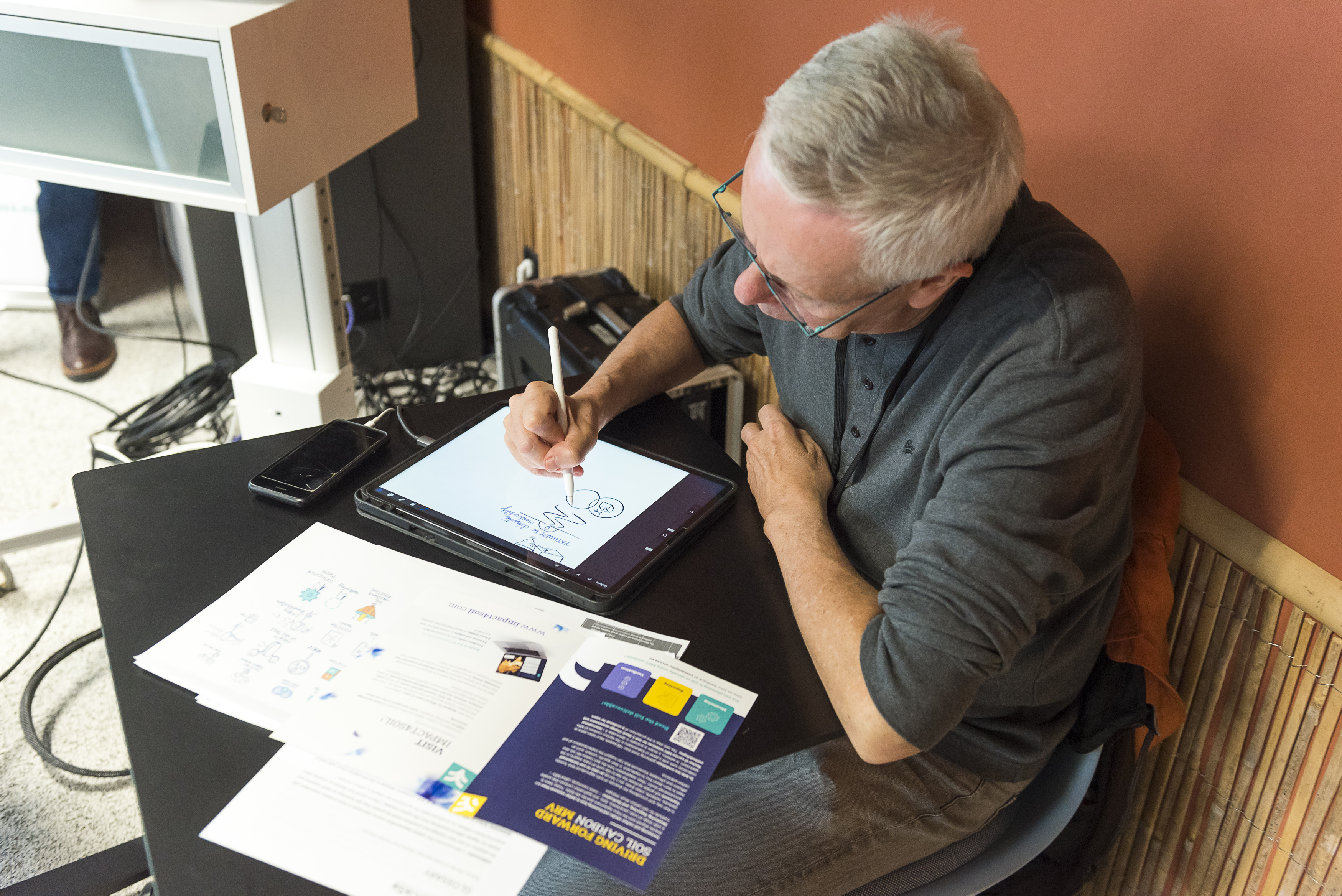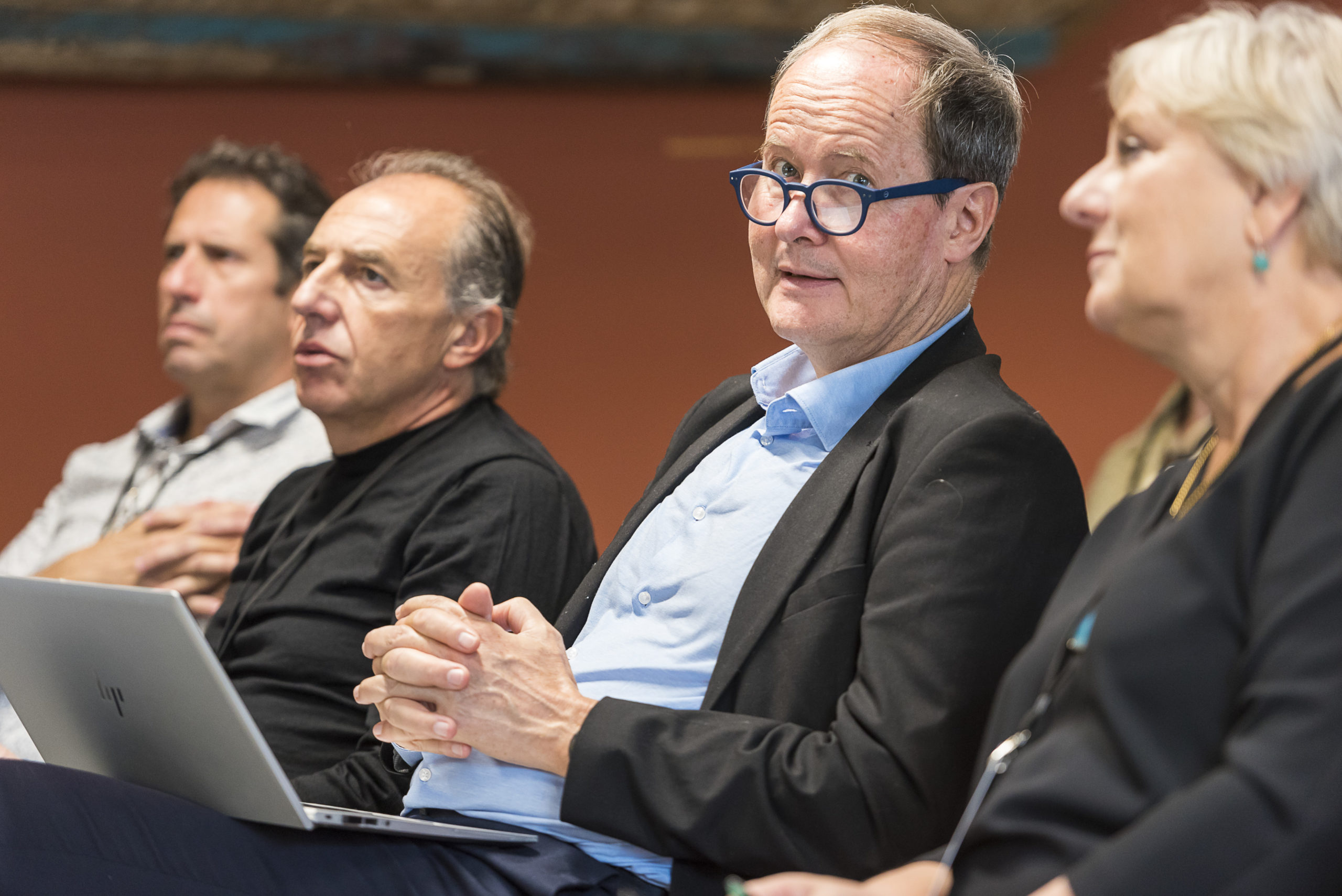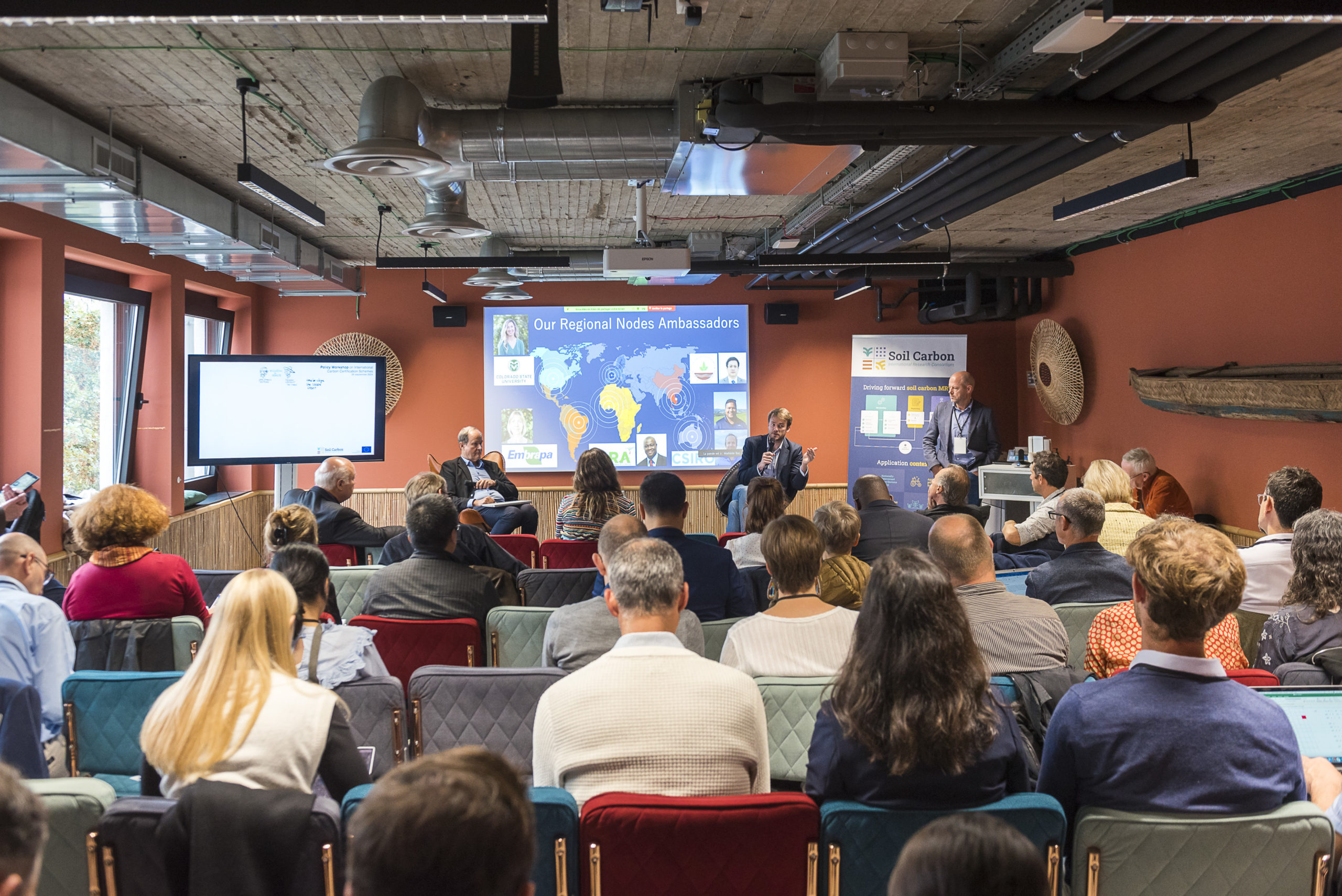A look back at the policy workshop in Brussels
One-third of the world’s soils are threatened by degradation and carbon depletion.We all have an idea of what these worrying statistics mean for the future health of our planet. What happens when we put researchers, regional experts and other international stakeholders in a room and get them to think pragmatically about harmonised guidelines for soil carbon policies and innovation schemes? Read on to find out!
A Brussels-based event with a global agenda
Last week, in the framework of the Soil Carbon International Research Consortium (IRC), we organised a high-level policy workshop in Brussels on carbon certification and the European Carbon Removals Certification Framework (CRCF). Around 65 participants attended in person, and 100 more tuned in online, for an in-depth discussion on soil organic carbon (SOC) storage schemes in Europe and around the world.
The agenda was divided into two acts, beginning with informative presentations from international experts who spoke on SOC initiatives and experiences in different regional contexts (Australia, the United States, the Pacific, Europe). This was followed by a dynamic townhall-style discussion on the certification frameworks, public and private approaches, and how these efforts can support global climate-neutrality goals, in line with the Paris Agreement and the EU Green Deal.
The session was avidly documented by a graphic facilitator, to boost collaboration and map the progression of the discussion. Read on for glimpses into the discussion, key takeaways and next steps for the Soil Carbon IRC and a harmonised framework for Monitoring, Reporting, and Verification (MRV).
Taking stock of soil carbon storage policies: a wider policy context
Soil carbon storage is not a standalone concept, it is applied and monitored according to different approaches and political contexts. For this reason, the workshop started with a series of presentations contextualising the policy contexts in Europe and across different regions.
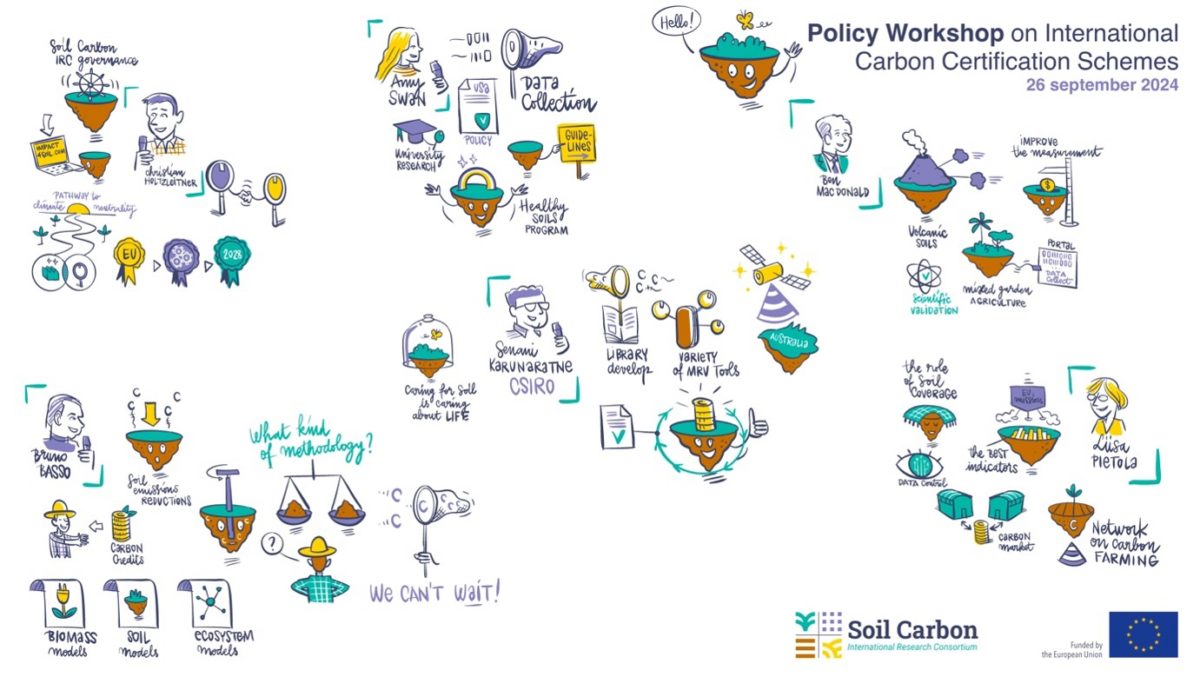
CRCF: European Carbon Removals Certification Framework
The session started with some guiding questions about the European CRCF, how it figures in the EU Bioeconomy and Climate policy framework and the priorities of the newly formed Commission. Christian Holtzleitner (European Commission’s Directorate-General for Climate Action) presented the EU’s roadmap between now and 2028 for establishing certification methodologies and launching an EU soil credit certification registry.
This workshop also underscored the importance for coordinating European research and innovation efforts on soil carbon. Liisa Pietola (Finnish Innovation Fund Sitra) introduced the EU Soil Mission, 1 of 5 Missions within the EU’s Horizon Europe research and innovation programme. She noted that, of the Soil Mission’s 8 objectives, half are related to carbon stocks: reduce desertification; conserve and increase soil organic carbon stocks; prevent erosion; improve soil structure to enhance soil biodiversity.
Looking beyond Europe
Given that soil health is a global climate challenge, the workshop shifted focus to the international policy context. Looking at the United States, it was noted that the land management sector ranks second, and ¼ of CO2 emissions are linked to the agri-food system. Bruno Basso (Michigan State University) and Any Swan (Colorado State University) described how US policies (federal and state) and scientific research contribute to the country’s private scheme, which involves voluntary carbon markets. They both intimated that this context could be impacted by the upcoming Election and potential changes to the political landscape.
Moving on, Senani Karunaratne and Ben Macdonald, from the Commonwealth Scientific and Industrial Research Organisation, gave presentations on high-input agriculture in Australia and the Pacific Region. They shared insights on Australia’s decade-long national policy on carbon storage. The country’s soil carbon measurement and models approach provided the audience with a clear example of using data focused on offsetting and the value chain. Macdonald described the variety of soils in the wider Pacific Region (e.g. volcanic land in the Kingdom of Tonga).
Some throughlines
A common reflection across the morning’s presentations was the need for science-driven soil carbon climate policies. The science, in turn, needs to be trusted and accurate, which presents a host of challenges for different regions and contexts (e.g. digital and data skills, lab capacity, etc.). For this, an accurate, trusted benchmarking system. As examples, some of the presenters shared benchmark models depicting different cropland and impact scenarios. These models are continuously being refined and improved, and they must be tailored to local contexts.
Workshop discusssions: a unique learning experience
The workshop culminated in a refreshingly frank discussion. Jean-François Soussana (Vice President, INRAE – Institut national français pour la recherche agronomique) and Edouard Lanckriet (Strategy Director and Carbon Farming Expert, Agrosolutions) guided the discussion, each bringing an important perspective (the research perspective, on the one hand, and the other the private/farming cooperative perspective).
At times, the floor was open to participants and colleagues from other parts of the world. The main question that captivated the discussion was: Can we create harmonised guidelines for a Monitoring, Reporting, and Verification (MRV) system that can be applied in different global regions?

Overheard during the discussion: much ado about MRV
The questions raised during the event might seem open ended, but here are some key takeaways:
- Soil health is global, in essence. Therefore, soil carbon data and modelling needs to be made available on a global scale. For this, global collaboration is crucial.
- Indeed, increasing soil carbon stocks and knowing how to better measure them are directly aligned with the Paris Agreement and the UN SDGs.
- Both public and private actors need to be involved in conceptualising this MRV system in the future that is transparent, robust and tailored to regional contexts.
- There is a lack of harmonisation across policies and credits. Scientists can help push for harmonisation, but for this, they need access to promising technologies and the farming data itself (which, depending on the legislation of a given region, might not be publicly available).
- If farmers are expected to adapt to a different system, there needs to be an understanding of the power dynamics in the MRV value chain between the farmers and cooperatives and the agrifood industry.
- There are regional differences (cultural, political, economic, etc.) region (the political situation, etc.) that need to be overcome when conceiving of a harmonised global MRV framework.
- Looking at the science behind the carbon models, each model has its own dynamics, advantages and disadvantages. So, an effective MRV framework is not just about selecting the best model, but agreeing on how it is used to ensure the desired results.
- Capacity building is also key to ensure modelling tools and data resources are handled properly.
Where does the soil carbon IRC fit in?
The workshop also provided a stage for the Soil Carbon IRC, and its future role in connecting these different regions around a harmonised MRV framework. For reference, the Soil Carbon IRC was officially launched in November 2023 at the first European Mission Soil Week.

During the workshop, participants heard from the 5 Regional Node Ambassadors, their experiences, solutions. Looking ahead, hand and in hand with the international “4 per 1000” Initiative, the Soil Carbon IRC is keen to help implement, in their specific context, such an efficient and affordable framework that can support the implementation of soil carbon practices.
Gallery






